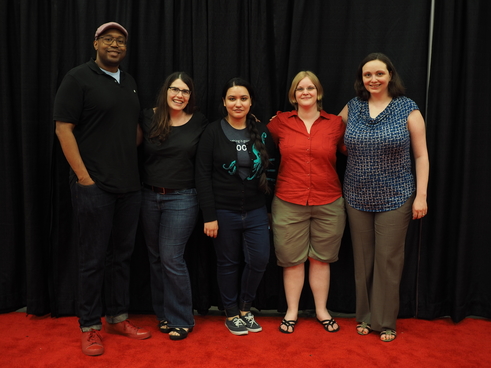“Listen to your customers!” –David Intersimone
Ever since computer programs were sold and shared with customers, there have been groups of users who have communicated with each other and with the developers. Software vendors realized that they could leverage user groups like the Southern California Computer Society, Houston Area League of PC Users, Homebrew Computer Club, Boston Computer Society, and Berkeley Macintosh Users Group to help sell to and educate customers. With modems, users could join bulletin boards and CompuServe to share ideas and launch new products. Meetings and newsgroups were ways to educate and support customers who were farther away from the large city user groups.
With the ubiquitous Internet, we now have developer networks, Facebook groups, Google Circles and more. Leading community members have become extensions of software vendor support organizations with designations like Microsoft MVPs (Most Valuable Professionals), product evangelists and specialists, and industry luminaries.
Software companies that foster global communities and leverage community experts can grow their business reach and scale their support to achieve higher levels of satisfaction. Local experts can communicate in their local spoken languages, and even help translate product user interfaces and documentation. Company ecosystems of product and technology partners provide additional product capabilities, education and training services to further expand the success of their products.
At Embarcadero Technologies, we have had online communities for our developer and database tools since the beginnings of the PC business. I can’t think of a time where we haven’t had online and local experts helping our customers and providing us valuable feedback to improve our products and systems. Even the largest hardware and software companies have legions of user volunteers and professionals helping users take advantage of the ever-increasing feature sets and integrations with operating system and hardware platforms.
Almost every software product and online service today includes open APIs for integrating and adding features. I can’t think of a successful offering that doesn’t provide a REST API, a Web Service API or an SDK. For developer relations, we even have an annual conference focused on how to grow a following of developers to help grow your business. Evans Data Corp. holds its annual developer relations conference each March. Most hardware, software and service companies have physical and virtual conferences to show developers and users how to take advantage of the many APIs available.
Nurturing and growing your community of users, developers and technology partners continues to be a key success factor to growing your business. Your users will help guide you to new platforms and requirements. Your partners will help you find prospective customers in industries and corners of the world that you thought were not reachable.
One important thing I have found in my many years as an evangelist and developer relations professional is to listen to your customers, partners and luminaries. They are your additional eyes, ears and brains. They are the most valuable extension to your sales, marketing, service and development teams.
David Intersimone is vice president of developer relations and chief evangelist at Embarcadero Technologies.
#!
“Embrace key principles!” –Peter Neubauer
Software is becoming easier and easier to build, which means there is now more software than ever today. Growing a user community around a product has become both easier—because the technologies and connectivity required for community building have greatly improved—and more difficult, as there are now more projects than ever competing for developers’ attention.
For developers, deciding what software to use involves a number of factors (note the order):
“Social proof” (Who else that I respect is using this?)
Ecosystem (Whom can I hire to develop this stuff?)
Ease of use and features (Does it meet my needs?)
Commercial backing (Who will help me once I’m in production?)
Price (Can I afford it?)
Communities can generally be classified as two key roles: the contributor and the general member. Contributors are those who actively contribute code, talk, tweets, e-mails, etc. to the community, whereas the general members are largely consumers. Having a strong group of community contributors, who lend their name, time and reputation to the cause, adds significant weight when it comes to social proof and the other areas.
Today, a thriving community is a company’s most effective tool for building a strong base of users, contributors and customers. Classic marketing channels have begun to wane in effectiveness when it comes to convincing potential users to adopt a product. Seth Godin has a great TED talk on this precise topic.
Done right, building a community doesn’t have to be expensive (not a new concept of course; see guerilla marketing), but it takes some serious passion and focus. Before they start, they need to embrace some key principles. In our experience, these are the following:
• Value in relationships: This actually encompasses not only our community message, but also a core message of our product: Neo4j. As fellow NoSQL community builder Meghan Gill put it: “Community is about building relationships, sharing experiences, and fostering the exchange of knowledge.” The strongest relationships are built in real life, so start investing face-to-face time; Meetup.com is great for that. That makes your online forums stick much better. Regularity is key for meetup growth.
• Give and give: Karma is the currency of communities, and it is built via contributions. Make sure your company gives more than it takes. Community first! Encourage contributors to increase their karma by writing, publishing and speaking about the things they love. Also, cover costs they incur while doing that for your product.
• Set up a higher goal: Nothing is more motivating than a greater goal. For example, our mission at Neo Technology is to “Help the world make sense of data,” where Neo4j is fundamentally not just about being the best graph database, it’s also about helping humanity understand how the world is connected: through relationships, causality, influences, etc.
• Be honest and transparent: At Neo, we take it all the way, developing the product as open source at GitHub. The world doesn’t end if you have flaws in your product; if you are thinking the right way and can involve the contributors in fixing things or discussing solutions, you will gain more trust and credibility than if you try to hide it.
• Find, nurture and care about your contributors: Contributors want to be involved. Nobody wants to be used. Contributors love things that need fixing; it gives them good karma and turns them into evangelists. Shower them with recognition, swag and early access to new stuff in your product!
• Turn all of your employees into contributors: It is people, not customers, buying into your product. People follow people. Everyone in your company should be part of the inner circle of your tribe, even if they are not engineers. Your kids should want to wear your products’ t-shirts.
• Treat your community like customers: The scalability and contribution of a thriving and forgiving community (that finds bugs, and provides feedback, evangelism and improvements) are a function of the quality of the interaction and response with community members. Treat the contributors and community members the same way as customers!
These are principles we embrace every day, and they are important ingredients in making our community thrive. Give them a try!
Peter Neubauer is VP of community at Neo Technology.





